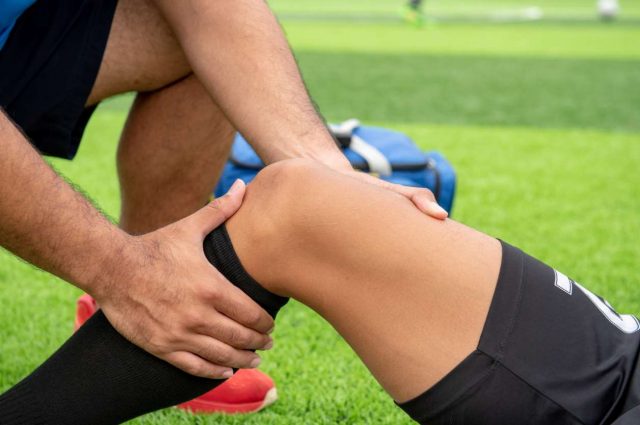Physiotherapy is required for the following sports injuries:
Sports injuries are common in the sport of sports, and they can happen to anyone, regardless of age or skill level.
Prevention, treatment, and recovery
An athlete’s career and overall health can be significantly affected by injuries, such as a sprained ankle, torn ligament, or muscle strain. Physiotherapy is a fundamental piece of the avoidance, treatment, and recuperation of sports wounds. Therefore, it is essential for any athlete to consult Advantage Physiotherapy for sports injury physiotherapy. In this blog, we will investigate a few top game wounds that require physiotherapy.
ACL tears
One of the most common sports injuries that necessitate physiotherapy is ACL tears. The knee joint is stabilized and prevented from excessively twisting or rotating by the anterior cruciate ligament (ACL). However, excessive force can tear or rupture the ACL, resulting in significant knee pain, swelling, and instability.
ACL tears are more common in athletes who engage in high-impact sports like football, basketball, soccer, and skiing. The most common causes of the injury are abrupt stops or changes in direction, awkward jumping and landing, and direct blows to the knee.
Techniques, proper conditioning, and training are all necessary to prevent ACL tears. The quadriceps, hamstrings, and calves—the muscles that surround the knee—should be the primary focus of athletes’ training. In addition, they should use appropriate equipment, practice landing, and jumping, and wear supportive footwear.
Physiotherapy and surgery are frequently used in conjunction to treat ACL tears. Physiotherapy assists with diminishing torment and enlarging, reestablishing the scope of movement, and further developing muscle strength and adaptability. Additionally, specific exercises are included to assist in retraining the knee joint and enhance balance and coordination.
Depending on the severity of the injury and the individual’s overall health and fitness, recovery from an ACL tear can take several months. Because it aids in accelerating healing, reducing pain and inflammation, and enhancing mobility and function, physiotherapy plays a crucial role in the recovery process. (1)
In a couple of significant cases, the requirement for medical procedures might emerge. To help stabilize the knee joint, this typically entails grafting a new ligament onto the damaged area. Following surgery, physiotherapy is an important part of the recovery process because it helps the knee joint and surrounding muscles regain strength and flexibility.
As a whole, proper training, conditioning, and techniques, as well as effective physiotherapy and medical intervention when necessary, are necessary to prevent ACL tears and manage the injury. Most athletes can recover from ACL tears and return to their sport with improved knee joint strength and stability with the right care.
Concussions are caused by a sudden blow to the head that causes the brain to move quickly back and forth. This can cause headaches, dizziness, nausea, and confusion among other symptoms. More severe symptoms, such as unconsciousness, seizures, and coordination problems, may occur in some instances.
In sports, preventing concussions is crucial, and athletes can take a variety of precautions to lower their risk of injury. Wearing suitable defensive stuff, like a protective cap, can assist with retaining the effect of a hit to the head. Athletes should also be taught to stay away from dangerous plays and techniques that make them more likely to get hurt.
Physiotherapy can be an important part of treatment and recovery after a concussion. Physiotherapists can work with competitors to foster a customized recovery plan that integrates activities to further develop equilibrium, coordination, and mental capability. To lessen pain and inflammation, they may also employ manual therapy, electrical stimulation, and ultrasound.
A concussion recovery can take time, so it’s important to let the brain heal completely before returning to sports. Athletes can have physiotherapists work with them to monitor their progress and make sure they are safe to play again. To avoid re-injury and ensure long-term recovery, gradual reintroduction to physical activity is essential.
Injuries and Strain
Injuries and strains are normal game wounds that can happen because of abuse or abrupt injury to the muscles and joints. While a strain involves injury to muscles or tendons, a sprain involves ligament stretching or tearing. These wounds can be difficult and limit portability, however, with the right treatment and care, competitors can recuperate and get back to their game. (2)
Sprains and strains
Sprains and strains can be avoided by practicing prevention. This includes stretching and warming up properly before engaging in physical activity, wearing appropriate footwear, and performing exercises and sports correctly. In order to avoid overuse injuries, athletes should also gradually increase the intensity and duration of their workouts.
It is critical to seek immediate medical attention in the event of a sprain or strain. Physiotherapy can speed up healing, improve range of motion, and help reduce pain and inflammation. Treatment might incorporate activities to fortify and extend the impacted muscles and joints, as well as modalities like ice or intensity treatment, electrical excitement, or back rub.
A sprain or strain recovery can take some time and patience. During the acute phase of an injury, athletes should adhere to their physiotherapist’s recommendations for rest, ice, compression, and elevation (RICE). Under the supervision of a physiotherapist, a gradual return to activity can begin as symptoms improve. It’s fundamental to pay attention to the body and not push excessively hard, as this can delay the recuperation interaction or lead to re-injury.
Shin Splints: Pain and discomfort in the lower leg, especially along the tibia bone, are known as shin splints. This condition is many times brought about by dreary weight on the muscles, ligaments, and bones in the lower leg, which can happen because of different proactive tasks. Physiotherapy can help prevent, treat, and manage a common sports injury known as shin splints.
Increasing the duration and intensity of physical activity over time is the most effective strategy for avoiding shin splints. Stretching and warming up properly can help reduce injury risk. It is also possible to lessen the impact on the lower leg by putting on appropriate footwear and protective gear.
The treatment of shin supports includes rest, ice, pressure, and height. Physiotherapy can assist with reducing agony and distress by giving activities to further develop muscle strength and adaptability. Additionally, ultrasound therapy and massage therapy can aid in healing and reducing inflammation.
Recuperation can require a little while or even months, contingent upon the seriousness of the injury. By providing a bespoke rehabilitation program that incorporates cardiovascular, stretching, and strengthening exercises, physiotherapy can accelerate recovery. Continuously expanding the force and length of active work can assist with forestalling the repeat of shin supports
Tennis elbow
Tennis elbow is brought about by the abuse of the lower arm muscles and ligaments that append to the external piece of the elbow. Overuse can tear the tendons in a small way, causing pain and inflammation.
A physiotherapist will determine the extent of the injury and devise a treatment strategy that may incorporate stretching, massage, and strengthening exercises. They may likewise suggest the utilization of a support or brace to help the impacted region and diminish further harm.
By practicing good form and technique throughout their sport, taking breaks as needed, and gradually increasing the intensity of their training, athletes can lower their risk of injury. Additionally, proper warm-up and cool-down exercises can aid in injury prevention.
Recuperation from tennis elbow can take time, and following the physiotherapist’s suggestions for rest and rehabilitation is significant. This might incorporate staying away from specific exercises, like lifting weighty items or taking part in sports that strain the impacted region.

Speaks from heart, always too passionate and driven by emotions. Spins the words with kindness & sharpness, intriguing your ever-inscrutable minds.




